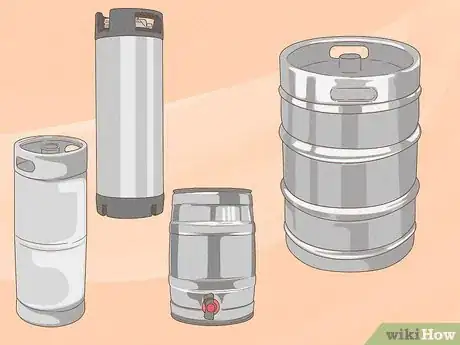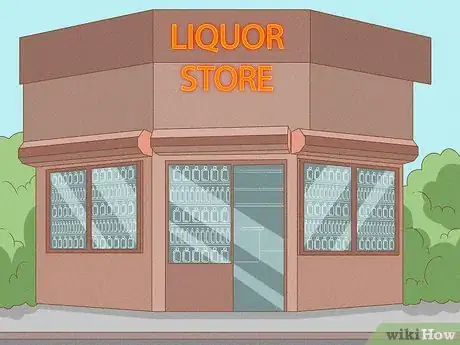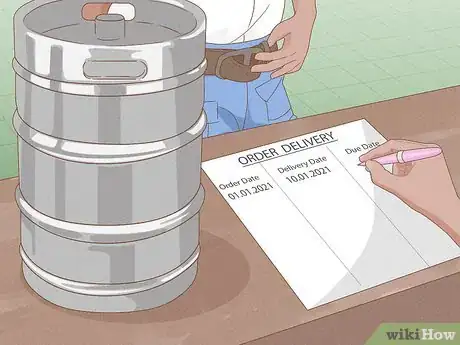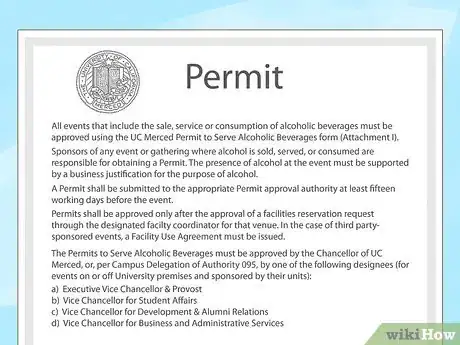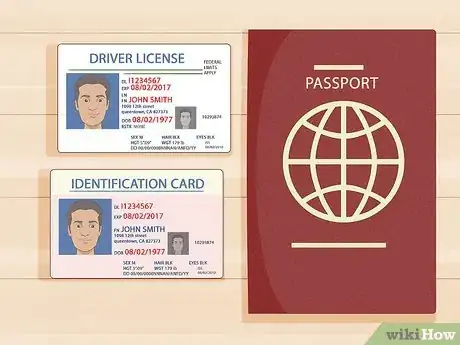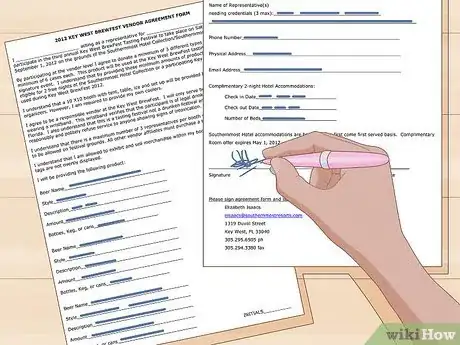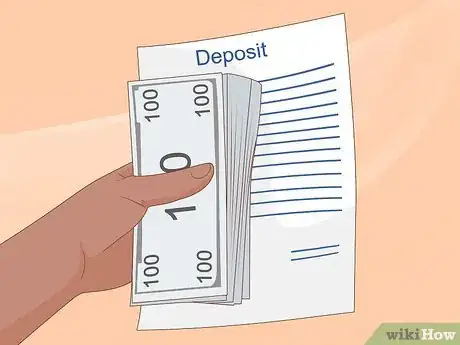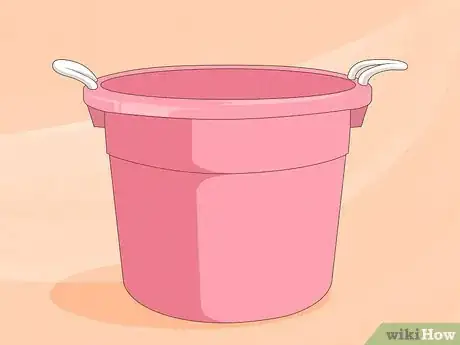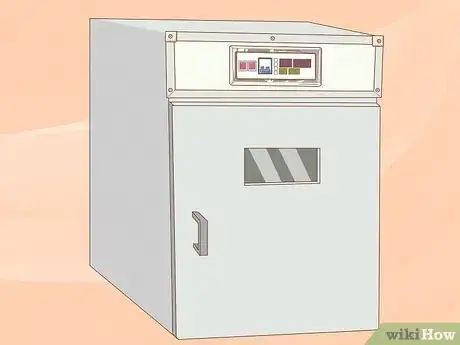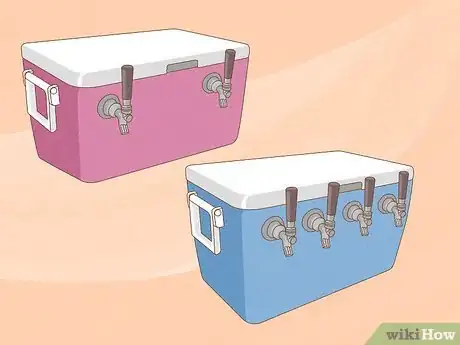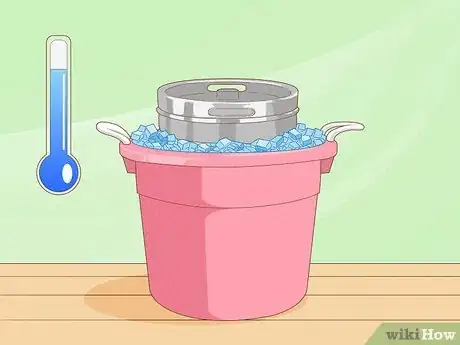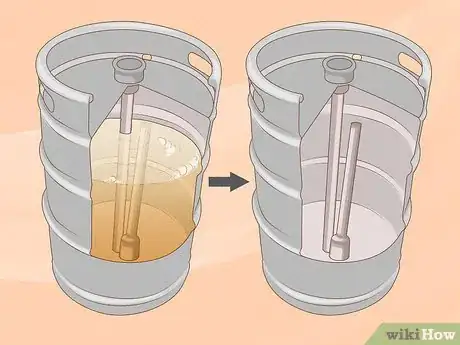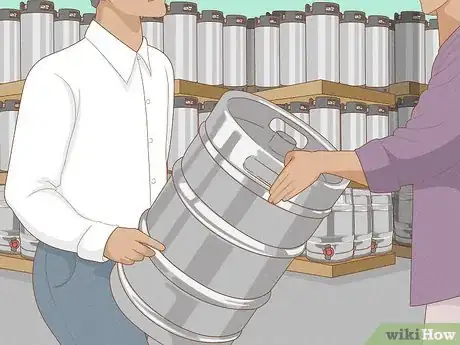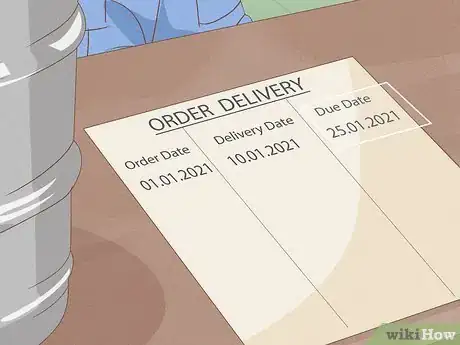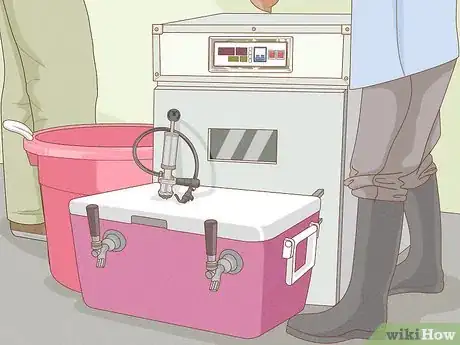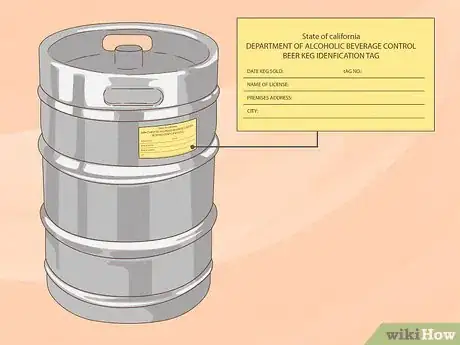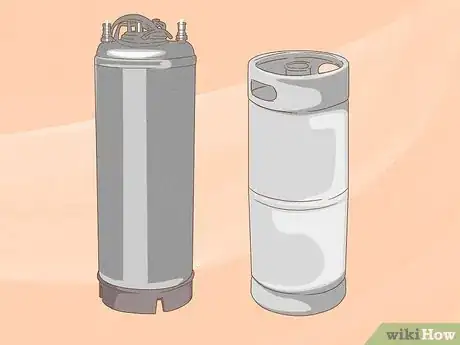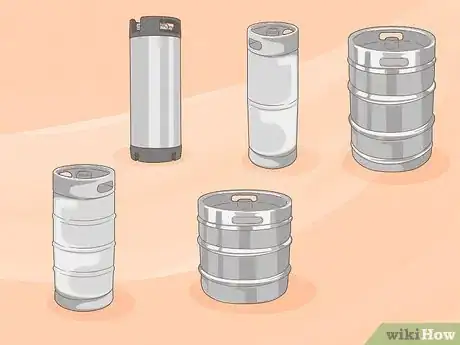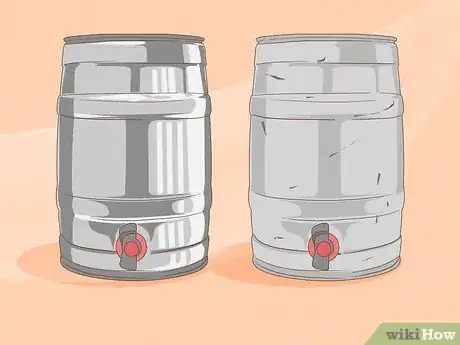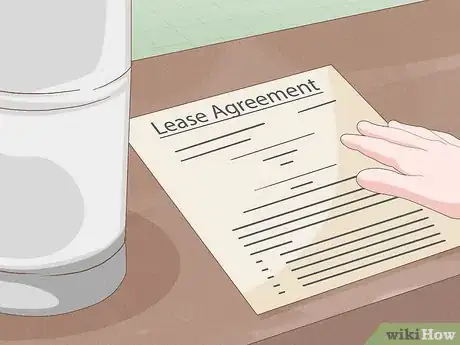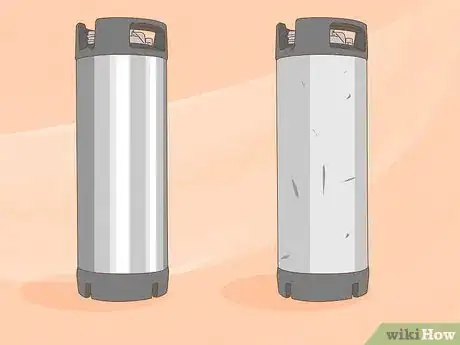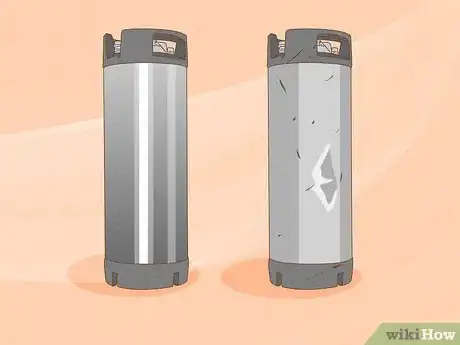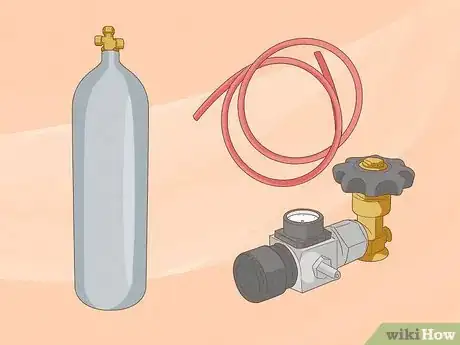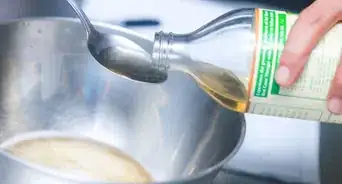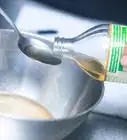This article was co-authored by Bryan Sullivan. Bryan Sullivan is a Bartender and the Owner of Bryan Sullivan Bartending in Seattle, Washington. With over 10 years of experience, he specializes in craft cocktails and has a thorough knowledge of beer, wine, and champagne. He currently holds a MAST Class 12 Mixologist Permit and has provided bar service for 100s of events. Additionally, his business has a 5-star rating and is a listed vendor on The Knot.
There are 8 references cited in this article, which can be found at the bottom of the page.
This article has been viewed 142,268 times.
A keg is a barrel that typically holds enough beer to serve guests at a large party or event. Buying a keg is simple, as long as you have the proper identification and money to pay deposits and beer costs. Planning for a party will require ordering the beer in advance, picking up the keg, and returning it in a timely manner after the party.
Steps
Ordering a Keg
-
1Figure out how much beer you need. Depending on the type of event you are hosting, you need to figure out how much beer you will need. Estimate that party guests will have 1-2 drinks per hour. There are several different sizes of kegs to consider:
- Mini keg: A mini keg holds about 5 liters, which is a good amount for bringing to a tailgate party or camping trip.[1]
- Cornelius keg: A Cornelius keg is a tall, round keg that is commonly used for soft drinks, but they have also been adapted by home brewers to use for beer as well.[2]
- Log keg (sixth barrel): A log keg holds about 5 gallons, which equals about 55 12-ounce servings, or 41 pints.
- Pony keg (quarter barrel): A pony keg holds about 7.5 gallons, which equals about 82 12-ounce servings, or 62 pints.[3]
- Full keg (half barrel): A full keg holds about 15 gallons, which equals about 165 12-ounce servings, or 124 pints. The full keg is the most common size of keg.[4]
-
2Find a store near your party. There are many places that sell kegs, such as liquor stores, breweries, wineries, and even some restaurants. Choose a place that is close to your party and that sells the type of beer you'd like to buy.Advertisement
-
3Place your order in advance. Planning in advance will ensure that your order will be fulfilled to your specifications. Planning at least 10 days in advance is a good idea.
- Some places do have kegs available for last-minute orders, but these may be limited in selection and size.
-
4Get the proper permit for serving at special events. If you are planning to serve beer from a keg at a wedding, fundraiser or other special event, you need to get the correct type of permit. These permits are typically issued by your state’s liquor control board.
- For private parties such as weddings or holiday parties, apply for a banquet permit. Typically, you will fill out a form, giving information about the event, and pay a fee (around $50).
- Nonprofit organizations need a special occasion permit in order to serve beer from a keg at a special event. These are also issued by your state’s liquor control board. They also need a licensed bartender to serve the beer. Be sure to have proof of the bartender’s license with you at the function.
Picking Up the Keg
-
1Bring government-issued ID. You will be required to show proof of age when you pick up the keg. This must be government-issued identification, such as your driver’s license, non-driver ID card, military ID, or passport.
- You must be at least 21 years old to purchase alcohol in the United States.
-
2Tell your friends to bring ID. Anyone who accompanies you to pick up the keg, even if they are just in the car, will be required to show proof that they are 21 or older.[5]
-
3Sign paperwork accepting responsibility for the keg. If you are the person renting the keg and signing the form, you are the one who is responsible for what happens with the beer inside the keg. You are therefore responsible for making sure no minors drink the beer, and those who do drink the beer are also responsible in their behavior.[6]
- You are also responsible for ensuring that the keg and other items are returned in the same condition as when you rented them.
- Some places might require that you provide the address where the keg is going to, the approximate date and time of the beer’s consumption, and your vehicle’s license plate.[7]
-
4Give the name of the person returning the keg. The store will likely ask for the name of the person who will be returning the keg. This is partly to ensure that the keg is responsibly used and returned in a timely manner by someone 21 years of age or older.[8]
-
5Pay the deposits and pay for the beer. You will be charged a refundable deposit fee for the keg itself in addition to the charge for the actual beer. The beer cost will vary depending on the type of beer, how much you are ordering, and where you’re located.
- Bring a credit card with you. Even if you pay the fees in cash, you’ll need a credit card for the deposit, which will be charged additional fees if you do not return the keg.
- Keg deposits can range from approximately $30 to $75 or more. You may also be charged a nonrefundable keg cleaning fee.
- Beers like Budweiser, Miller and Coors are usually cheaper than microbrews, with Budweiser costing $100 for a full keg and other beers like Dogfish Head running about $225 for a full keg.
-
6Ask for instructions. Before you leave the store, ask for instructions on how to use the keg. You might be familiar, but it's a good idea to make sure you're clear on how to attach the tap and get the best quality beer from the keg.
-
7Be prepared for heavy lifting. Kegs that are full of beer are heavy. A full keg weighs roughly 162 pounds. Use a dolly if possible, and have a friend help you lift the keg in and out of your vehicle.
- Kegs are usually only delivered to licensed establishments, not private residences.
Renting Accessories for the Keg
-
1Rent a tap. A tap is needed to attach to the keg in order to dispense the beer. If you don’t already have a tap, you’ll need to rent one. Most places require a refundable tap rental fee (around $50) and a nonrefundable tap cleaning fee (around $10-$15).
-
2Rent a bucket for chilling the keg. Many establishments have chilling buckets available for rental. These are garbage can sized buckets that the keg will go into, along with ice for keeping the keg cold.[9]
-
3Rent a kegerator. A kegerator is a refrigerator that is specially designed to hold a keg and to allow for easy beer dispensing. Many places will rent kegerators by the day, week, month or even on a rent-to-own plan.[10] If you are hosting a special event or are planning to regularly have kegs, a kegerator may be a classier, more versatile option for you.
-
4Rent a jockey box. A jockey box is a mini cooler that has tubing through which beer will flow to a tap. Hook up your keg to the jockey box, along with a carbon dioxide unit, and this will produce instantly cold beer on tap for your guests.[11]
- Jockey boxes can be rented with 1, 2 or 4 taps in one unit.
Storing the Keg
-
1Keep the keg cold. The beer should be served at about 38 degrees Fahrenheit, but that requires that you keep the beer cold.[12] Use a chilling bucket filled with ice or a kegerator (a refrigerator specially designed for kegs).
- Alternately, you can place the keg inside a large garbage bag and fill the bag with ice.
- Do not allow the beer to go above 55 degrees F or below 28 degrees F. Beer that is too warm will produce bacterial growth. Beer that has frozen will have reduced quality of flavor and aroma.
-
2
-
3Drink the beer within a suitable time frame. Depending on the type of tap you use on the keg, you may need to finish the beer sooner than later.
- A manual pump (the kind most often used at a party, for example) will reduce the quality of the beer’s taste rather quickly. In this case, drink the beer within 8 hours. You may be able to stretch this out to one day.[15]
- Using a kegerator and CO2 to dispense your beer will prolong the quality and freshness of the beer. In this case, pasteurized beer can last up to 3 months. Unpasteurized beer might last about 2 months.[16]
Returning the Keg
-
1Empty the keg. Remove all the beer in the keg before you return it. Some places ask that the kegs be returned empty. You are paying for the beer, so you might as well drink it or store it in growlers (large bottles for beer).
- You will not get any refund on the keg once it leaves the store where you bought it. Even if the keg is entirely full, you have purchased it and will receive no refund if you request one.
-
2Remove the tap from the keg. Before you transport the keg in your vehicle, make sure to remove the tap from the keg. Otherwise, the keg could be considered an open container, which is illegal to have in a moving vehicle in the U.S.
-
3Make sure the right person returns the keg. When you rented the keg, you should have given the establishment the name of the person returning the keg. This will likely be the same person who rented the keg. This person is the one who will receive the refundable deposit back.
- The store might refuse to accept the keg and equipment if the wrong person tries to return them.[17]
-
4Return the keg by the deadline. You don’t have to bring the keg back the morning after a party, but you do need to bring it back in a timely manner. Most places will give a deadline by which the keg needs to be returned. Sometimes this is 5 days, while other places give you up to 2 weeks to return a keg.
-
5Bring back all of the items you rented. If you rented a tap or a bucket for chilling the keg, be sure to return these with the keg. Then you will receive any refundable fees associated with the keg and accessories.
-
6Make sure the sticker or other identifier is still on the keg. The store where you picked up the keg will place an identifying sticker on the keg. They will need this information to make sure the returned keg is the one that was rented.[18]
Buying a Keg for a Business
-
1Learn the laws in your state. There are strict laws governing the sale of alcohol in the U.S., and some states regulate the sale and storage of beer in kegs. There are some restrictions on keg size and type, so be informed about what your state allows.
- Check with your state’s liquor control board to find out specifics regarding liquor regulations in your area.
-
2Choose an open system or closed system keg. Kegs can be filled through valves that are either located on the side (open system), which can be easily accessed and filled, or through a closed system valve that requires automated equipment for filling.
- Closed system kegs are typically more expensive, but they are usually preferred by distributors and breweries that might carry your beer.
-
3Choose the size and number of kegs. Keg sizes are varied, and the most common sizes are sixth barrel, quarter barrel and half barrel. Consider who you are selling your beer to, and how frequently, when deciding on keg size and number. Will the brewery or distributor ask for smaller sized kegs to start? Or, on the other hand, should you start with larger kegs so that your customers don’t have to change their kegs so often? Knowing your market will go a long way to knowing what size and number of kegs to buy.
-
4Choose new or used kegs. You can find new and used kegs, and used kegs are certainly a cheaper option. New kegs look better and can be imprinted with your company’s logo, while used kegs may have the former owner’s logo on them. New kegs are usually more easily sanitized, while older kegs can potentially have build-up (called beerstone). If you are buying a used keg, make sure to consider the following:
- Make sure the keg does not leak.
- Make sure the keg is sanitized and able to be cleaned.
- Make sure the keg is not dented (verify that the keg will hold the correct amount of beer and any dents do not subtract from the correct amount).
-
5Lease a keg. You don’t have to buy a keg for your business. There are leasing companies that charge a monthly fee per keg. Many of these companies have multi-year contracts (such as 5-year contracts). A typical rate is $1.70 per keg per month.
Buying a Keg for Home-brewed Beer
-
1Choose an open system or closed system keg. Kegs can be filled through valves that are either located on the side (open system), which can be easily accessed and filled, or through a closed system valve that requires automated equipment for filling.
- Closed system kegs are typically more expensive and will likely require additional equipment that can run from hundreds of dollars to thousands of dollars.
-
2Choose the size and number of kegs. Keg sizes are varied, and the most common sizes are sixth barrel, quarter barrel and half barrel. Consider how much beer you will be brewing and how quickly it will be consumed when deciding on keg size and number.
- The most common keg for the home brewer is the Cornelius keg (also called a “Corny keg”). These are the same tall, thin shape that is used to hold soda.
-
3Choose new or used kegs. You can find new and used kegs, and used kegs are certainly a cheaper option. New kegs look better, while used kegs may have the former owner’s logo on them. New kegs are usually more easily sanitized, while older kegs can potentially have build-up (called beerstone). If you are buying a used keg, make sure to consider the following:
- Make sure the keg does not leak.
- Make sure the keg is sanitized and able to be cleaned.
- Make sure the keg is not dented (verify that the keg will hold the correct amount of beer and any dents do not subtract from the correct amount).
- Use Powdered Brewery Wash or PBW if you want to clean a keg at home.
- You can mix the PBW with hot water in it.
- Scrub with a sponge or leave it overnight. Then rinse it the next day.
-
4Acquire additional equipment. Storing your beer and dispensing it from kegs may require additional equipment. This equipment includes:
- CO2 tank: A high pressure CO2 tank will provide carbonation and enable you to dispense the beer from the keg. Purchase one from a welding supply store or online.
- Pressure regulator: This instrument will regulate how much CO2 is going into your keg, and consequently, how carbonated your beer will be.
- Connection lines: You will need connectors to hook up the CO2 tank to the keg. Get two quick disconnects, a gas line and a picnic faucet.
Community Q&A
-
QuestionHow old do I have to be to rent a beer tap?
 Tom De BackerTop AnswererIn the US, you have to be at least 21. All people involved in renting a beer tap, renting a keg, buying a keg, buying alcohol, etc. must be at least 21.
Tom De BackerTop AnswererIn the US, you have to be at least 21. All people involved in renting a beer tap, renting a keg, buying a keg, buying alcohol, etc. must be at least 21.
Warnings
- When you put a deposit down on a keg, you’re renting, not buying. The keg always remains the property of the brewery. Any keg you rent should be returned in a reasonable amount of time.⧼thumbs_response⧽
- Always store empty kegs securely until you can return them to the place of purchase.⧼thumbs_response⧽
- Do not tamper with, mishandle, abuse or alter a keg. Also, be aware that turning a rented keg into a keggle or grill is vandalism, and you could get in trouble with the law.⧼thumbs_response⧽
- If you lose your deposit because you left your keg in your garage for a year, you still don’t own the keg.⧼thumbs_response⧽
- Only purchase kegs from a seller who holds legal title to those kegs.⧼thumbs_response⧽
- Legal title should be transferred to you by the seller.⧼thumbs_response⧽
References
- ↑ http://learn.kegerator.com/keg-sizes/
- ↑ http://learn.kegerator.com/keg-sizes/
- ↑ http://www.thebeverageking.com/BK6kegpolicies.html
- ↑ http://learn.kegerator.com/keg-sizes/
- ↑ http://www.thebeverageking.com/BK6kegpolicies.html
- ↑ http://www.thebeverageking.com/BK6kegpolicies.html
- ↑ http://www.mcmenamins.com/1454-mcmenamins-breweries-keg-sales-faqs
- ↑ http://www.thebeverageking.com/BK6kegpolicies.html
- ↑ http://www.thebeverageking.com/BK6kegpolicies.html
- ↑ http://tapthatkegnow.com/rentals/kegerator-rentals/
- ↑ https://www.maltandvine.com/kegs.html
- ↑ http://learn.kegerator.com/how-long-does-a-keg-remain-fresh/
- ↑ https://www.thebeerstore.ca/our-beers/kegs-home-draught/ordering-information/
- ↑ http://www.thebeverageking.com/BK6kegpolicies.html
- ↑ http://learn.kegerator.com/how-long-does-a-keg-remain-fresh/
- ↑ http://learn.kegerator.com/how-long-does-a-keg-remain-fresh/
- ↑ http://www.thebeverageking.com/BK6kegpolicies.html
- ↑ http://www.thebeverageking.com/BK6kegpolicies.html#Q7
About This Article
Before buying a keg, decide between a mini keg, which is usually enough for a tailgate party, or a full-sized keg, which has about 165 servings. Then, when you know what you need, go online to find a liquor store or brewery near you. Call at least 10 days ahead to order your keg. Remember to take your ID showing you’re at least 21 when you pick it up! While there, ask about renting other gear, like a tap or a kegerator, and find out how to return the keg when you’re done. IF you want to learn how to buy a keg that you can keep for a business or home-brew, keep reading!
